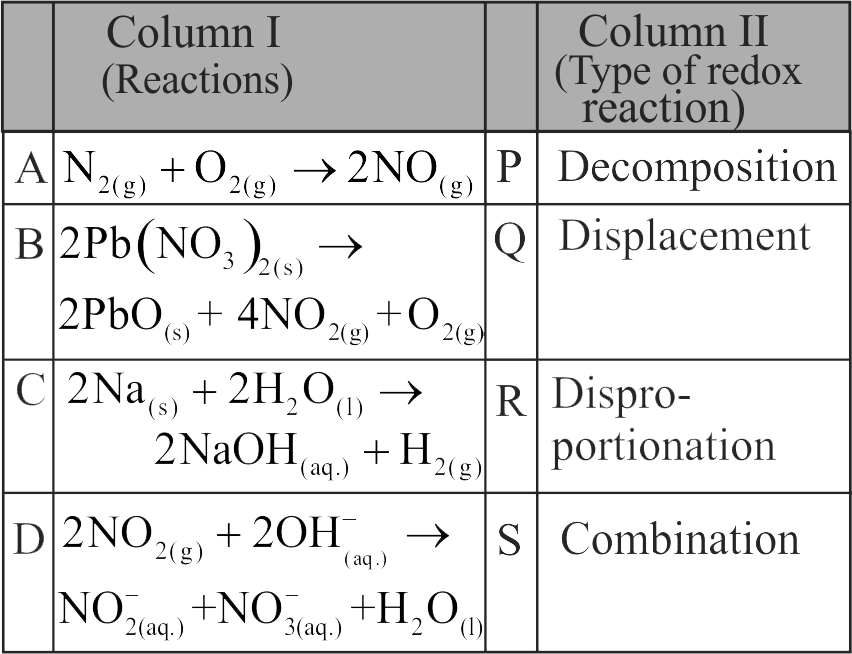315466
When chlorine gas passes through a concentrated solution of alkali.
I. \(\mathrm{\mathrm{Cl}_{2}}\) is oxidised to \(\mathrm{\mathrm{ClO}^{-}}\)
II. \(\mathrm{\mathrm{Cl}_{2}}\) is reduced to \(\mathrm{\mathrm{Cl}^{-}}\)
III. Products formed are \(\mathrm{5 \mathrm{Cl}^{-}, \mathrm{ClO}_{3}^{-}}\)and \(\mathrm{3 \mathrm{H}_{2} \mathrm{O}}\).
Which of the above statement is/are correct?
315466
When chlorine gas passes through a concentrated solution of alkali.
I. \(\mathrm{\mathrm{Cl}_{2}}\) is oxidised to \(\mathrm{\mathrm{ClO}^{-}}\)
II. \(\mathrm{\mathrm{Cl}_{2}}\) is reduced to \(\mathrm{\mathrm{Cl}^{-}}\)
III. Products formed are \(\mathrm{5 \mathrm{Cl}^{-}, \mathrm{ClO}_{3}^{-}}\)and \(\mathrm{3 \mathrm{H}_{2} \mathrm{O}}\).
Which of the above statement is/are correct?
315466
When chlorine gas passes through a concentrated solution of alkali.
I. \(\mathrm{\mathrm{Cl}_{2}}\) is oxidised to \(\mathrm{\mathrm{ClO}^{-}}\)
II. \(\mathrm{\mathrm{Cl}_{2}}\) is reduced to \(\mathrm{\mathrm{Cl}^{-}}\)
III. Products formed are \(\mathrm{5 \mathrm{Cl}^{-}, \mathrm{ClO}_{3}^{-}}\)and \(\mathrm{3 \mathrm{H}_{2} \mathrm{O}}\).
Which of the above statement is/are correct?
315466
When chlorine gas passes through a concentrated solution of alkali.
I. \(\mathrm{\mathrm{Cl}_{2}}\) is oxidised to \(\mathrm{\mathrm{ClO}^{-}}\)
II. \(\mathrm{\mathrm{Cl}_{2}}\) is reduced to \(\mathrm{\mathrm{Cl}^{-}}\)
III. Products formed are \(\mathrm{5 \mathrm{Cl}^{-}, \mathrm{ClO}_{3}^{-}}\)and \(\mathrm{3 \mathrm{H}_{2} \mathrm{O}}\).
Which of the above statement is/are correct?

